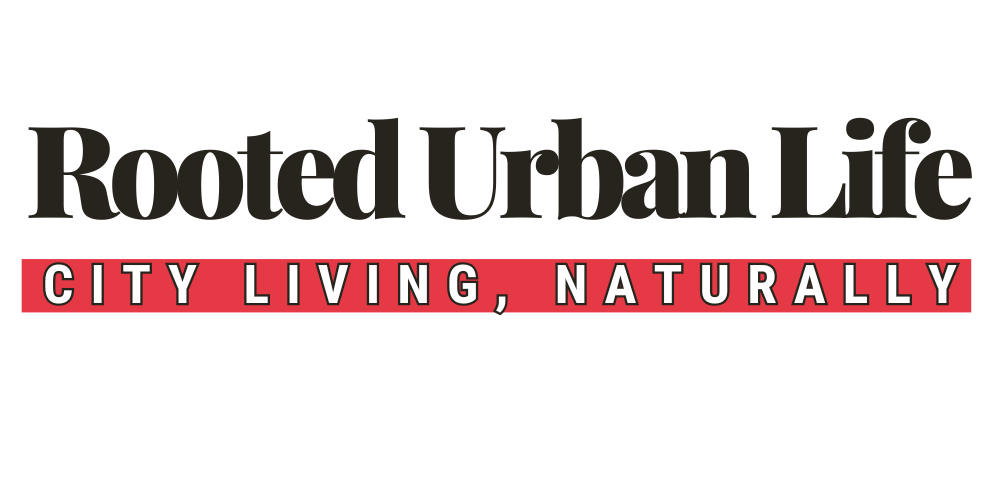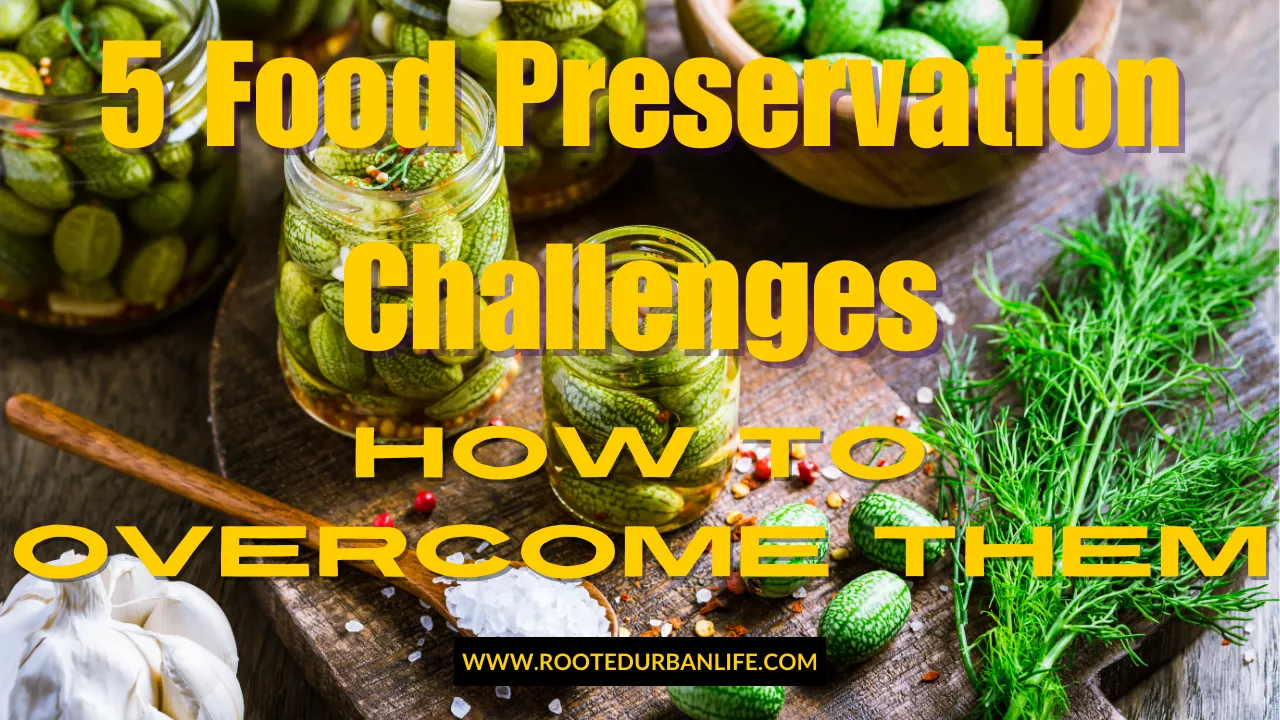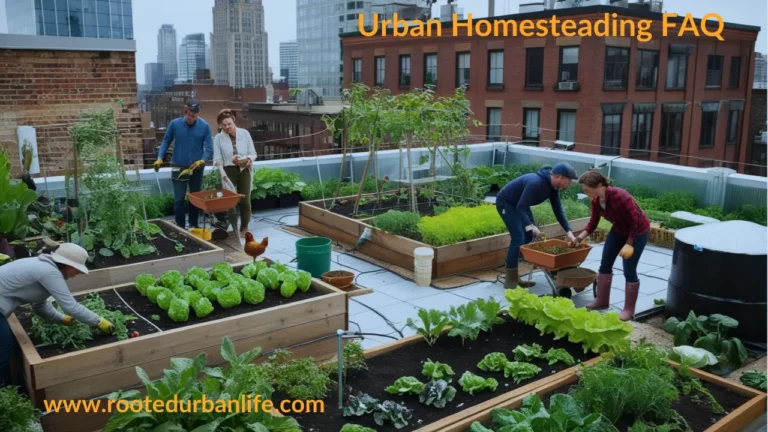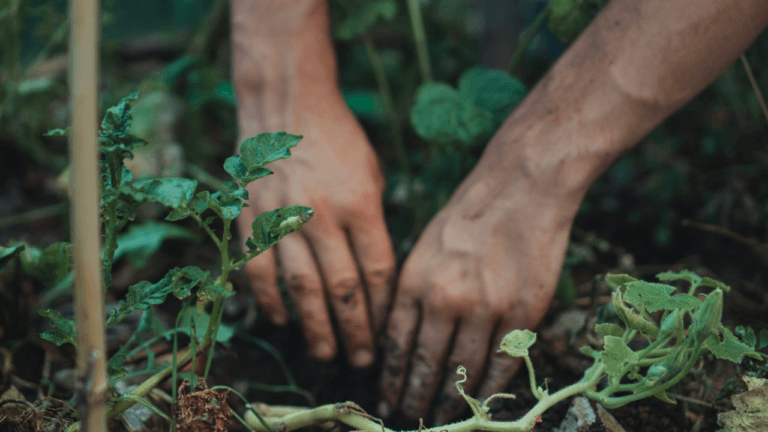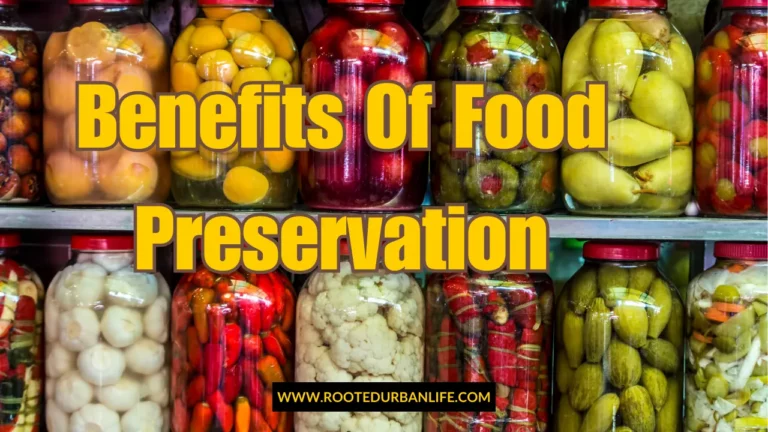5 Food Preservation Challenges and How to Overcome Them
Food preservation challenges are a common hurdle for anyone looking to extend the life of their homegrown produce.
Whether you’re dealing with a bumper crop of tomatoes or trying to find a way to store herbs from your balcony garden, preserving food can sometimes feel overwhelming.
But with the right strategies, these challenges can be easily overcome. In this guide, we’ll explore the top five food preservation challenges and provide practical solutions to help you preserve your harvest with confidence.
Read more: 5 Food Preservation Challenges and How to Overcome Them| While food preservation offers numerous benefits, it comes with five main challenges: space constraints, time commitment, initial costs, food safety concerns, and potential nutrient loss. With smart strategies these obstacles can be overcome. By understanding and addressing these challenges, urban homesteaders can successfully preserve food, reduce waste, and enjoy home cooked means year round. |
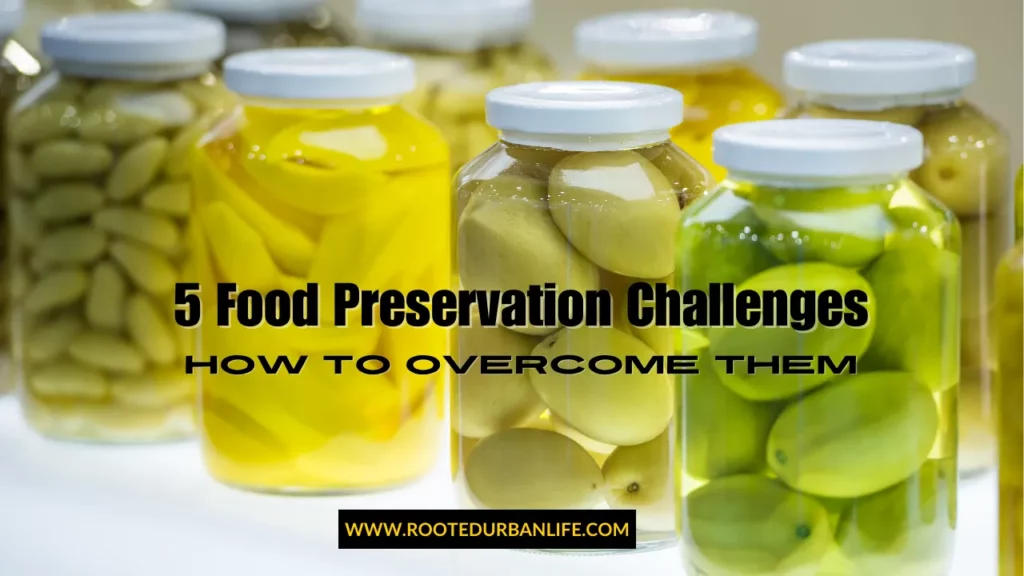
The 5 Major Food Preservation Challenges (and How to Tackle Them)
1. Space Constraints: How to Preserve in a Small Kitchen
Living in a cozy apartment or tiny home means limited counter space and storage—two things that are essential for food preservation.
Space limitations are one of the biggest food preservation challenges for urban homesteaders, especially when you want to can, freeze, or dehydrate large quantities.
The key is to maximize every inch of space you have.
- Vertical gardening allows you to grow more in smaller areas.
- Compact kitchen tools like small dehydrators and pressure cookers save valuable counter and storage space.
- Micro-preservation (preserving smaller batches) is another great option for those tight on space. It lets you preserve a variety of foods without overwhelming your kitchen. For example, you could preserve a few jars of tomato paste, a couple of jars of sun-dried tomatoes, and a small batch of pickled green tomatoes.
Here are some micro-preservation tips:
- Preserve in smaller containers: Use pint-sized canning jars or even small glass bottles for jams, jellies, and pickles.
- Dehydrate in batches: If you have a dehydrator, use it to dry small quantities of herbs, fruits, and vegetables.
- Freeze in smaller portions: Divide food into smaller portions before freezing to avoid wasting food when you only need a small amount.
- Experiment with different preservation methods: Try fermenting, smoking, or pickling small batches of food to explore different flavors and techniques.
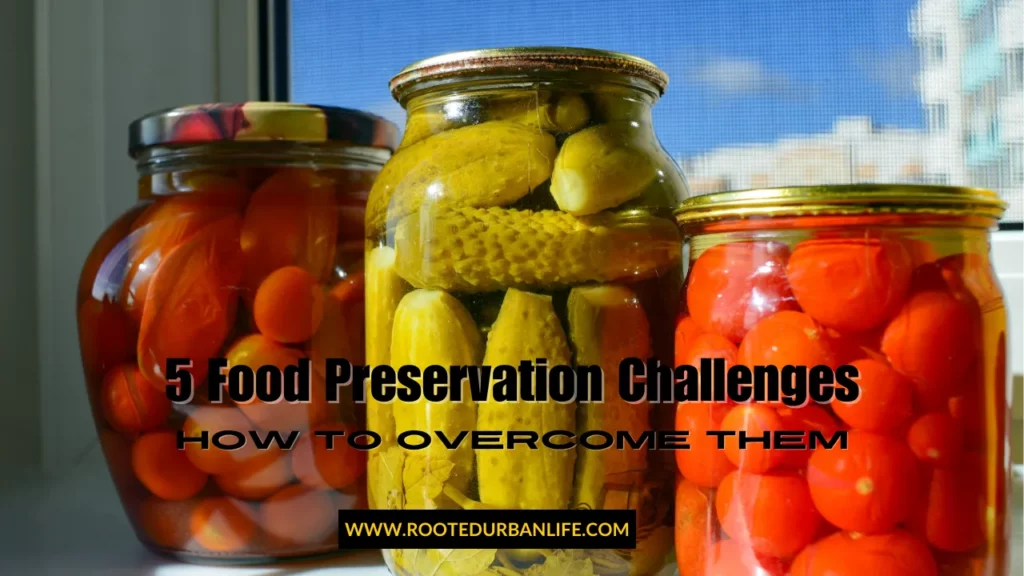
2. Time Commitment: Finding Time for Food Preservation
Preserving food isn’t a weekend project for most—it’s a process that requires time, patience, and organization. Whether you’re canning vegetables or drying fruit, the time commitment involved can make the process feel daunting.
One effective technique is batch cooking and preserving in stages.
Set aside a day or two each month for larger projects, like canning or freezing, to avoid overwhelming yourself.
By planning your meals around seasonal harvests, you can efficiently preserve food and make use of every item.
Work smarter, not harder. Use tools like pressure canners, food processors, and dehydrators to speed up prep and processing time.
Don’t try to preserve everything at once. Focus on the most perishable items first, like berries or leafy greens, and work your way through the list. This way, you won’t burn out, and you’ll always have fresh, preserved food on hand.
Additional Time-Saving Tips for Food Preservation
- Utilize kitchen gadgets: Invest in time-saving kitchen gadgets like a food processor, blender, or pressure cooker. These tools can help you prepare produce more efficiently and reduce the time spent on canning, freezing, and dehydrating.
- Learn shortcuts: There are often shortcuts and hacks that can help you save time during the food preservation process. For example, you can use a pressure canner to reduce canning times, or you can freeze fruits and vegetables without blanching them for certain recipes.
- Involve family and friends: Food preservation can be a social activity. Invite family and friends to help you with tasks like peeling, chopping, and canning. This can make the process more enjoyable and less time-consuming.
- Prioritize tasks: Not all food preservation tasks need to be done immediately. Prioritize tasks based on the perishability of the produce and your available time. For example, you might want to preserve highly perishable items like berries first, while less perishable items like tomatoes can wait.
- Plan ahead: By planning your food preservation activities in advance, you can ensure that you have the necessary supplies and equipment on hand. This can help to prevent delays and reduce stress.
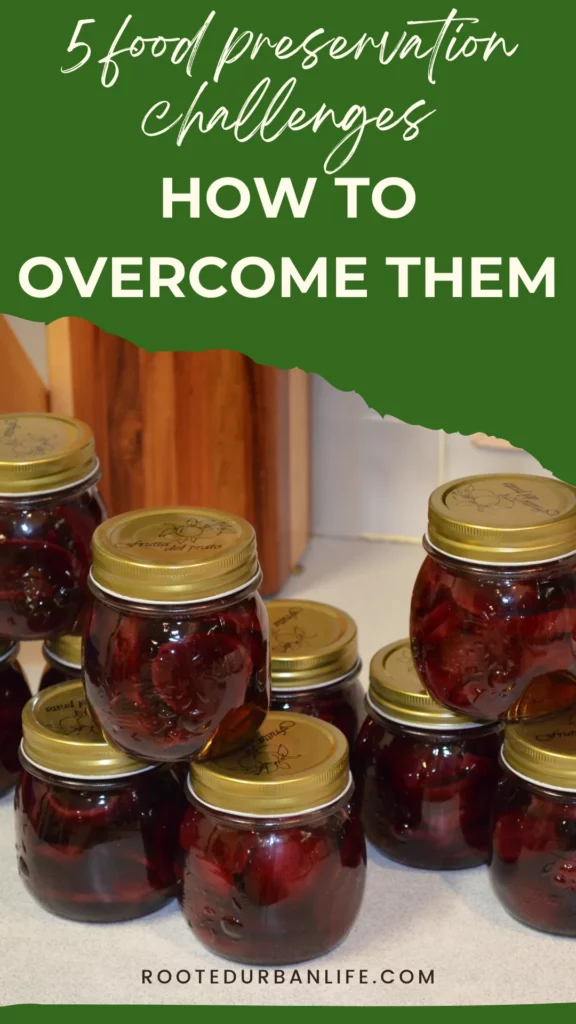
3. Initial Costs: Balancing Budget with Preservation Goals
Getting started with food preservation can be expensive. Between purchasing jars, equipment, and supplies, the upfront costs can add up quickly. Food preservation challenges often include managing these expenses without breaking the bank.
Be strategic with your purchases to keep costs down. Begin with basic tools like a few jars, a basic canning kit, and a small dehydrator.
Look for used equipment at thrift stores or online marketplaces. Many canning tools, jars, and dehydrators are available at a fraction of the cost when purchased pre-loved.
Purchase common supplies like salt, vinegar, and sugar in larger quantities to save money over time.
Split costs with friends or neighbors. Pooling resources for a shared canning or dehydrating day can help reduce the overall investment while increasing the variety of tools and methods you can use.
Here are some benefits of sharing canning supplies:
- Reduced costs: By pooling your resources, you can purchase supplies in bulk and reduce individual costs.
- Increased variety: You can access a wider range of equipment and supplies, allowing you to experiment with different preservation methods.
- Community building: Sharing supplies and knowledge can foster strong relationships with your neighbors and friends.
- Skill sharing: You can learn new techniques and share your expertise with others in the community.
Here are some ideas for organizing a canning supply sharing group:
- Community canning days: Organize regular canning days where everyone brings their supplies and works together to preserve food.
- Equipment lending library: Set up a lending library for canning equipment, such as pressure canners, dehydrators, and jars.
- Supply cooperatives: Create a cooperative where members can purchase supplies in bulk and share the savings.
4. Food Safety: Avoiding Risks in Home Preservation
One of the most serious food preservation challenges is the risk of foodborne illness, particularly when it comes to canning. If done incorrectly, preservation methods like canning can lead to dangerous bacteria like botulism.
Prioritize food safety by following tested, trusted recipes and using the right techniques.
Always use recipes from reliable sources, such as the National Center for Home Food Preservation or trusted canning books.
Sterilize jars, use the correct canning process, and make sure to follow processing times and temperatures.
Label jars with dates so you can easily keep track of when they were preserved and ensure you use them within a safe time frame.
When in doubt, freeze it! Freezing foods is often safer and simpler than canning, especially for beginners. It also preserves the nutrients better in some cases, like with berries or leafy greens.
5. Nutrient Loss: Keeping Your Food Fresh and Nutritious
Many preservation methods, especially heat-based techniques like canning, can lead to the loss of nutrients like vitamin C and antioxidants. For those seeking to preserve both flavor and nutrition, this can be one of the biggest food preservation challenges.
Choose preservation methods that retain the most nutrients. Freezing is a fantastic option for preserving both flavor and nutrients. Unlike canning, freezing locks in more vitamins, especially for fruits and vegetables.
Dehydrating is another great method, particularly for herbs and certain fruits, and it doesn’t cause significant nutrient loss.
Fermentation is a win-win for preserving food and boosting its nutritional profile, especially with probiotic-rich foods like sauerkraut and kimchi.
To minimize nutrient loss, don’t overcook or over-process your food before preserving it. Keep cooking times short and freeze or can the food while it’s still fresh.
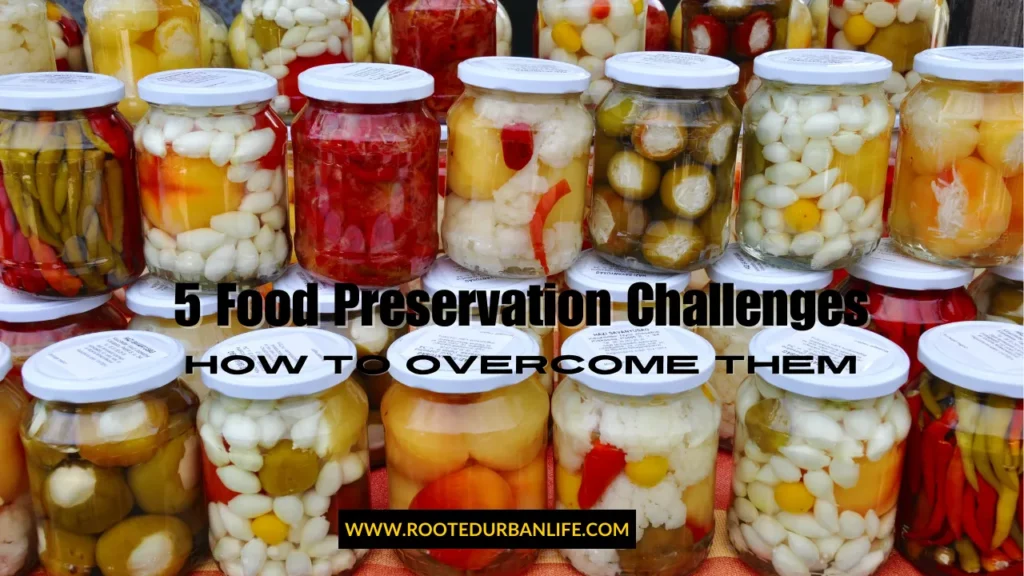
Additional Tips and Suggestions:
- Experiment with Different Preservation Methods: Don’t be afraid to try new techniques like fermenting, smoking, or pickling. These methods can add unique flavors and textures to your preserved food.
- Consider the Seasonality of Your Produce: Preserve foods that are abundant in your area during certain seasons. This can help you save money and reduce food waste.
- Label and Date Your Preserved Food: Properly labeling and dating your preserved food can help you track expiration dates and avoid food waste.
- Share Your Preserved Food with Others: Give your preserved food as gifts or share it with friends and family. It’s a great way to connect with others and show your appreciation for the bounty of your garden.
- Join a Food Preservation Community: Connect with other urban homesteaders and food preservation enthusiasts. Sharing tips, recipes, and experiences can make the process more enjoyable and rewarding.
- Don’t Be Afraid to Make Mistakes: Food preservation is a learning process. Don’t be discouraged if you make mistakes along the way. Just learn from your experiences and keep trying new things.
- Enjoy the Process: Food preservation can be a rewarding and satisfying hobby. Take your time, enjoy the process, and savor the fruits of your labor.
FAQs: Your Food Preservation Questions Answered
Q: Is canning food safe?
A: Yes, canning food can be safe when done correctly. However, it’s essential to follow proper canning techniques and use tested recipes to avoid foodborne illnesses like botulism.
Q: What is the best way to preserve fruits and vegetables?
A: The best preservation method for fruits and vegetables depends on their type and your preferences. Common methods include canning, freezing, dehydrating, pickling, and fermenting.
Q: How long does preserved food last?
A: The shelf life of preserved food varies depending on the preservation method and the type of food. Properly canned food can last for years, while frozen food can last for several months or even years.
Q: Is home canning worth the effort?
A: Whether home canning is worth the effort depends on your individual circumstances. If you enjoy gardening and want to preserve your homegrown produce, it can be a rewarding experience. However, it’s important to consider the time, space, and cost involved.
Q: Can I preserve food without a freezer or canner?
A: Yes, you can preserve food without a freezer or canner. Dehydrating is a popular option for preserving fruits, vegetables, and herbs. You can also ferment foods like sauerkraut and kimchi.
Q: How can I reduce nutrient loss during food preservation?
A: To minimize nutrient loss, consider using gentler preservation methods like freezing or dehydrating. Additionally, blanching vegetables quickly and adding acid can help to preserve nutrients.
Q: What are the risks of eating preserved food?
A: The risks of eating preserved food are minimal when proper techniques are followed. However, improper canning or storage can lead to foodborne illnesses.
Q: Can I preserve food in plastic containers?
A: While plastic containers can be used for short-term storage, they are not recommended for long-term food preservation. Glass jars are generally preferred for their durability and resistance to leaching.
Q: How do I know if my canned food is spoiled?
A: Look for signs of spoilage, such as bulging lids, leaking, or discoloration. If you notice any of these signs, discard the food immediately.
Q: Can I reuse canning jars?
A: Yes, you can reuse canning jars. However, it’s important to inspect them for any cracks or chips before using them again.
Key Takeaways
| Space constraints: Maximize your space with vertical gardening, compact appliances, and micro-preservation techniques. Time commitment: Plan ahead, batch cook, and involve others to reduce time spent on food preservation. Cost: Start small, shop secondhand, and share supplies with others to minimize expenses. Food safety: Prioritize hygiene, use tested recipes, and inspect jars for signs of spoilage. Nutrient loss: Choose appropriate preservation methods, blanch vegetables quickly, and add acid to retain nutrients. Enjoy the process: Embrace the challenges, learn new skills, and savor the delicious fruits of your labor. |
Don’t let food preservation challenges stop you from enjoying homegrown food year-round. By addressing the obstacles of space, time, and costs while keeping food safety and nutrition in mind, you can successfully preserve your produce. Start with small, manageable projects, and grow your skills as you go. The more you preserve, the easier it gets, and soon you’ll be enjoying the satisfaction of your own homemade preserves.
We’d love to hear from you. What food preservation challenges have you faced? Share your experiences and tips in the comments below, and let’s learn together. For more homesteading tips, sign up for our newsletter and stay updated!

